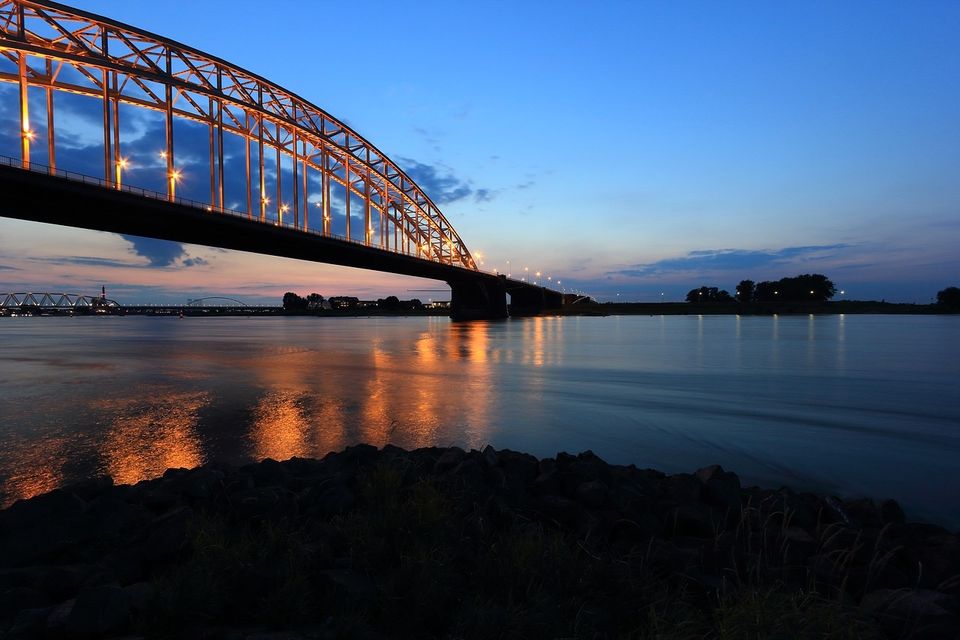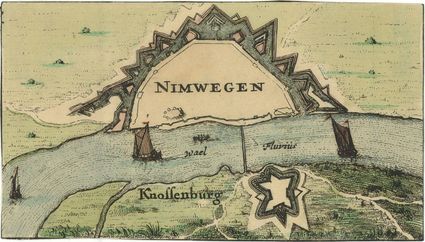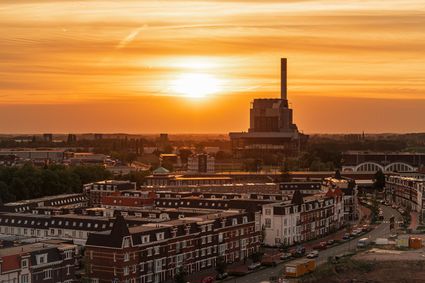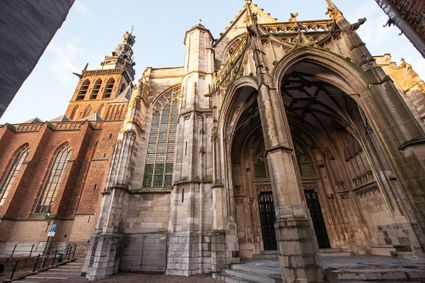The Waal-bridge, a new connection for traffic
Nijmegen is bursting at the seams with historical stories, ranging from leading figures to ordinary people, from neighbourhoods to political events. The Canon of Nijmegen encompasses the most important stories about Nijmegen’s history. One of these stories tells the tale of the most famous bridge in our city: the Waal-bridge. On June 16th, 1936, the opening of the new road bridge over the Waal was celebrated. After Queen Wilhelmina cut the ribbon with silver scissors, a procession of decorated cars crossed the bridge. But not everyone was happy with the new bridge: black flags hung from the storefronts in the Benedenstad.
1905 – 1917: negotiations and objections
The realisation of the Waal-bridge was quite a challenge. Since the mid-seventeenth century, the connection over the Waal had been limited to a reaction ferry with the appropriate name of “Zeldenrust” (Seldom rests), which was pushed by the water’s current from one side of the river to the other. In 1905, some city council members, including photo dealer C.A.P. Ivens (father of Joris Ivens), advocated for the construction of a road bridge. The initial idea was to connected this bridge to the already-existing railroad bridge, built in 1879; however, that plan turned out to be too impractical to realise.
In 1911, the Minister of Waterways and Public Works decided that a new bridge could be built, provided that it ended at the Belvédère. The city council agreed to these terms, but the shopkeepers of Nijmegen didn’t: they wanted the bridge to end at the Ganzenheuvel in Benedenstad, where their stores were located. Through letters, petitions, and election campaigns, they fiercely opposed the Belvédère Bridge – and with success, because despite Ivens’ tireless efforts, the city council decided to let the matter rest in 1917.
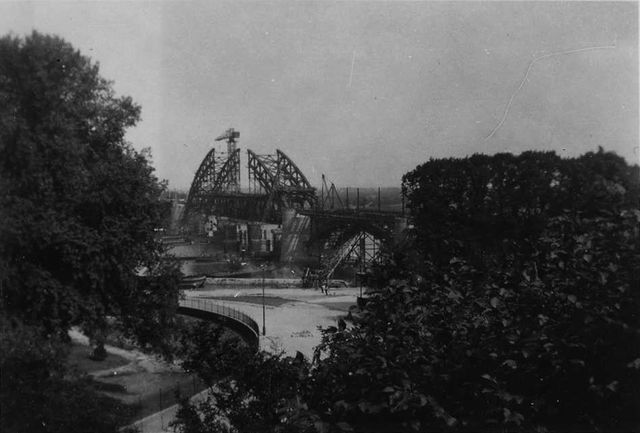
The Waal-bridge under construction
1931-1936: building the Waal-bridge
In the 1920s, the subject of the Waal-bridge once again came to the attention of the national, provincial, and municipal governments: increased traffic demanded new measures. The Waal became increasingly busy, which made crossing the river by ferry more dangerous. The growing number of cars and (motor)cycles caused waiting times at the ferry to increase, both on the Waalkade and at the Veerdam in Lent. Moreover, the construction of the bridge could provide work for the growing number of unemployed people in Nijmegen. After some research, the government chose to go with a Belvédère Bridge once again – and the shopkeepers once again protested. However, their objections didn’t manage to dissuade the city council this time: the bridge was going to be built. Construction began in October of 1931, largely to provide as much employment as possible, and finished five years later. Meanwhile, in April of 1935, the Rijn-bridge near Arnhem had also finished construction. Like the Waal-bridge, this bridge, as part of the National Highway Plan, was largely financed by the State.
After the bridge was opened, the ferry was taken out of service. And, as the shopkeepers in Benedenstad had predicted, the focus of trade shifted to the upper town and the new suburbs. The Benedenstad would be a problematic area until the post-war renovation.
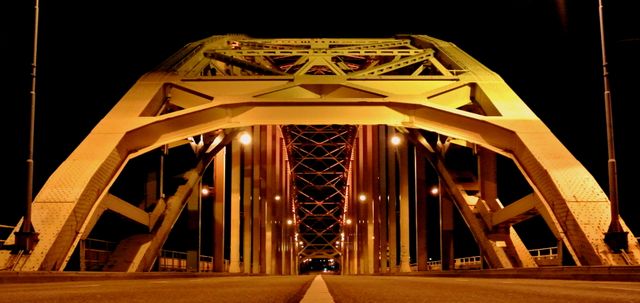
The Waal-bridge at night
Immerse yourself in the rich history of the oldest city in the Netherlands, because Nijmegen has a lot of stories to tell you. Curious? You can read all about it in this historical timeline.
